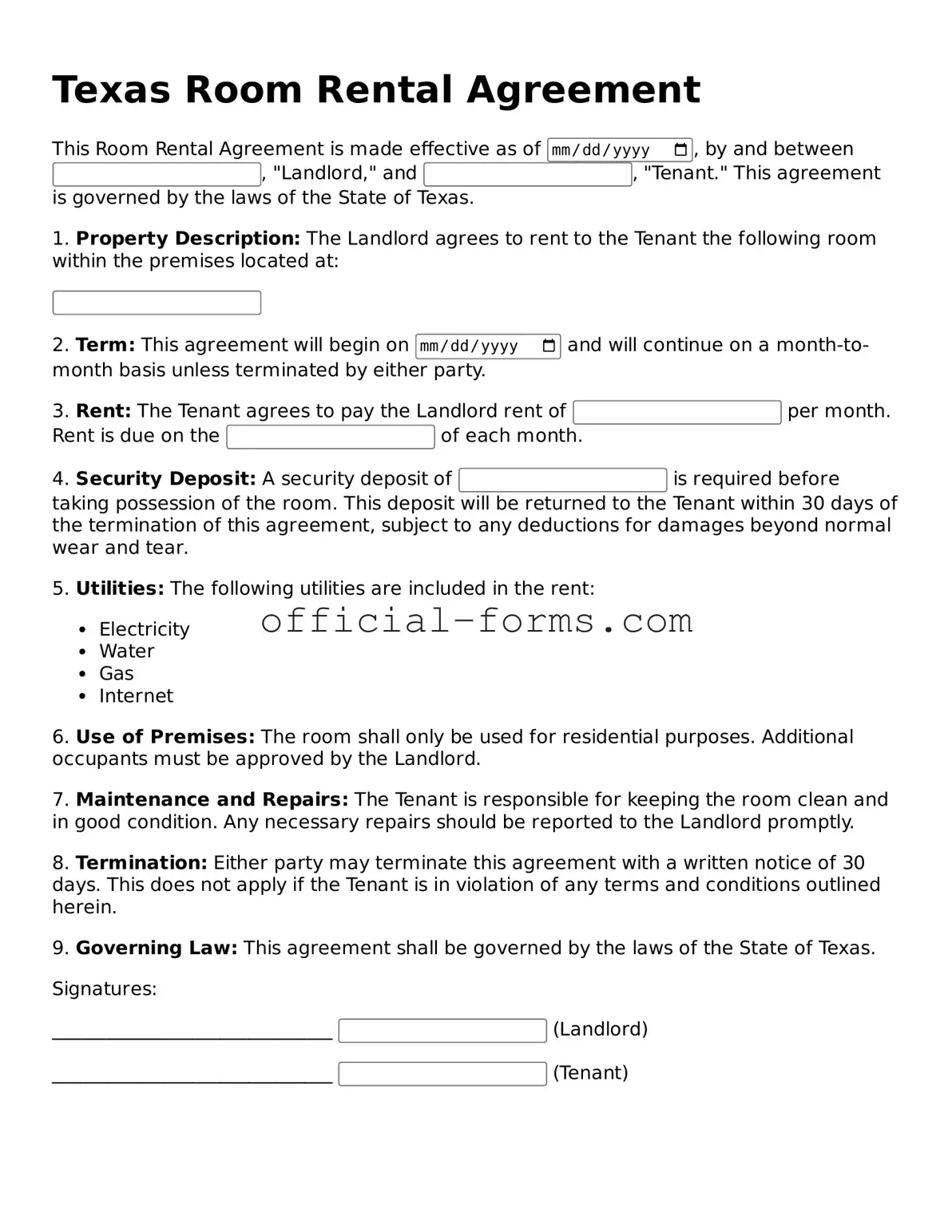Filling out a Texas Room Rental Agreement form can seem straightforward, but there are common mistakes that many people make. One frequent error is neglecting to provide accurate personal information. This includes names, addresses, and contact details. When these details are incorrect, it can lead to confusion and complications down the line.
Another mistake involves overlooking the rental amount. It’s essential to clearly state the monthly rent. If the figure is left blank or miswritten, it can create misunderstandings between the landlord and tenant. Make sure to double-check this section to avoid any future disputes.
Many individuals also forget to specify the duration of the rental agreement. Whether it’s a month-to-month arrangement or a longer lease, this detail is crucial. A lack of clarity can lead to assumptions that may not align with the intentions of either party.
Additionally, people sometimes fail to include the security deposit amount. This is an important aspect of the agreement, as it protects the landlord and outlines the tenant's responsibilities. Clearly stating this amount helps set expectations from the start.
Another common oversight is not reading the terms and conditions thoroughly. Many individuals may skim through this section or skip it altogether. Understanding the rules regarding maintenance, repairs, and other responsibilities is vital for both parties to avoid conflicts.
Some tenants may also neglect to sign and date the agreement. An unsigned document can lead to questions about its validity. Both parties must provide their signatures to make the agreement legally binding.
Finally, failing to keep a copy of the completed agreement can be a significant mistake. Having a copy ensures that both parties have access to the same information and can refer back to the terms if needed. This simple step can save a lot of trouble in the future.
